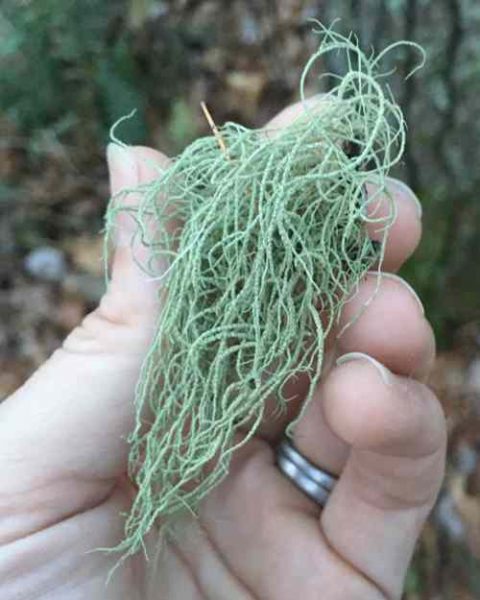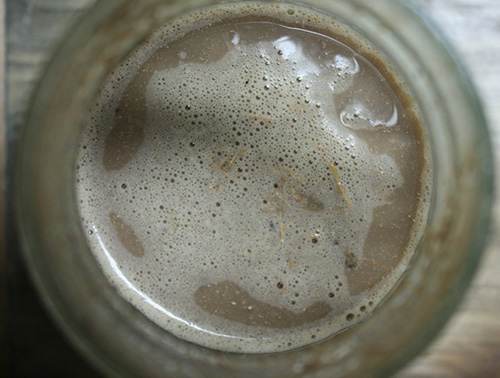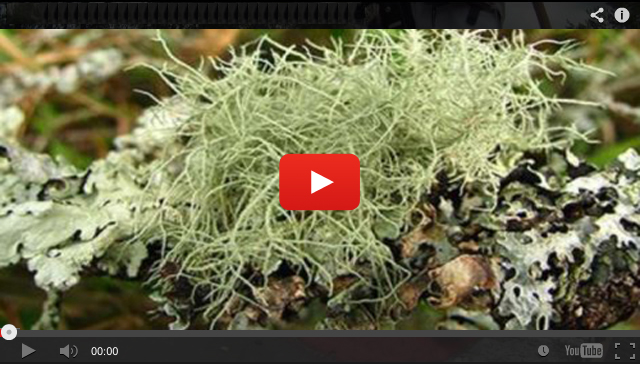There has been plenty of concern in recent years with the overuse of antibiotics, and the risks that overusing them can bring, even to a normally healthy person. While prescription antibiotics certainly have their place and benefit, overusing them, or using them inappropriately, can contribute in creating a resistance to the medication that was developed to heal. Another concern is all the uncomfortable and serious side effects that can come with taking antibiotics, such as nausea, rashes, sensitivity to the sun, and potentially fatal c. diff colitis.
It’s no surprise then, that more and more people are turning to natural remedies and antibiotics, such as usnea. You might be wondering if natural and homegrown antibiotics could cause side effects or be harmful to certain people? Sure, just like prescription antibiotics, there can be side effects. However, unlike more commonly known prescription antibiotics, usnea can be completely natural without unhealthy chemicals…and you might even be able to find it right in your own backyard. You may also want to check if these extremely powerful natural antibiotics that are littleknown to mankind grow around your house.
Just Like Doxycycline: The Antibiotic That Grows in Your Backyard
What is Usnea?
Usnea is a fairly common and intriguing lichen found in many forests and woods across the world. A lichen is defined by Merriam-Webster as: “any numerous complex plantlike organisms made up of an alga or a cyanobacterium and a fungus growing in symbiotic association on a solid surface (such as on a rock or the bark of trees).” The usnea lichen, which has a body with a netted hair-like texture, is developed through a mutual relationship between fungus and algae.
While there are several types of species of the usnea lichen, the one with the highest degree of medicinal value is often referred to as “Old Man’s Beard”, due to its appearance. Often found on trees, it can easily be identified by lightly pulling the main branch of the lichen apart. If it’s usnea, the green outside layer will break, exposing a stretchy white band substance found inside, which should remain intact. However, due to this species being ultra-sensitive to polluted air, it’s rarely found within city limits.
Possible Medicinal Value and Uses of Usnea
Usnea has been used for medicinal purposes since ancient times by Egyptian, Greek, and Chinese healers. This is not a new plant, nor a recent or temporary fad. It has been around for a very long time for use in healing people with certain ailments. The outer portion of the lichen, referred to as the cortex, holds the antibiotic composites, and the inner part (the thallus) contains a substance that stimulates the immune system.
Related: THE BEST NATURAL PAINKILLER THAT GROWS IN YOUR BACKYARD (SIMILAR TO MORPHINE)
Common ailments and conditions that are thought to benefit from the application of usnea, include the following:
- Fever
- Inflammation
- Weight loss
- Yeast infections

Some people with HPV (human papilloma virus) have also found some benefit in using a form of usnea. It’s suggested that a person apply a product containing usnic acid (found in usnea) and zinc sulfate to the vaginal area prior to and after the surgical removal of HPV lesions. By doing so, it could help speed up the healing process and diminish the chances of recurrence of the infection.
Although it’s been used globally since ancient days, for various purposes, usnea has eluded various herbal traditions that solely focused on vascular plants. However, the usnic acid is found to interrupt the cellular system of Gram-positive bacteria, such as Staphylococcus and Streptococcus, while leaving the necessary natural microbiota intact.
It is a particularly formidable medicinal tool for inflammation and dampness often associated with respiratory and urinary tract infections. Applied topically, usnea can also be effective in fighting against MRSA, and fungal infections such as candida.
Used as a wound dressing, usnea could be a wonderful remedy for infected wounds, such as cellulitis. The drying and cooling attributes of usnea help to reduce heat and redness stemming from the infection. Due to the natural anti-microbial properties found in the lichen, it is often applied directly to an open wound to fight off infection. It can either be mixed with water to form a mixture to be applied, or used as a powder after it’s been dried.
A spray could also be used to apply on areas where fungus might be lingering, such as the feet, either between the toes on in the nails.
Finding and Developing Usnea as an Antibiotic
Usnea can be applied either externally, or internally. It can be developed into various forms, such as the following:
- cough lozenges
- a tincture or extract

- mouthwash to gargle with, by mixing water with a usnea tincture
- a salve for wound dressing, to apply externally
Some of the above forms can be found in a health store. But, you can also make your own. And, a walk through the woods might be all you need to find the main ingredient. When looking for usnea lichen to make your own remedies, you can often find it in the woods, either on trees, or the ground after falling from the trees. Look for hair-like growths, similar to an overgrown beard. If you find it, place it on cotton or paper until you can get it home. From there, you will have diverse options in developing a viable antibiotic and treatment to use for the ailments and conditions mentioned earlier.
Usnic acid isn’t soluble in water. So, it’s best to extract it in alcohol, oil, or heat. Depending on which form you are seeking to create, or use, the extraction method can differ. For example, when making a tincture or extract, place the usnea into a jar, then cover it with vodka. Let this mix sit for several months, then strain it into a dropper bottle.
Consulting an herbalist would be beneficial if you have any doubt or questions on how to make the proper form, how to apply it, or where to find it.
The Antibiotic That Grows in Your Backyard, watch video below!
Source: askaprepper.com
Read Also:
THE BEST NATURAL PAINKILLER THAT GROWS IN YOUR BACKYARD (SIMILAR TO MORPHINE)
A MEDICINAL PLANT MAP THAT SHOULD BE IN YOUR SURVIVAL KIT
HOW TO DEHYDRATE HERBS FOR LONG-TERM STORAGE
THE TOP MEDICINAL PLANTS OF NORTH AMERICA
NATURAL EMERGENCY TREATMENTS EVERY PREPPER SHOULD KNOW
OFF GRID ANTIBIOTICS – FOR WHEN THERE IS NO MEDICINE
THIS COMMON DRIVEWAY WEED IS ONE OF NATURE’S MOST POWERFUL SURVIVAL PLANTS
23 MEDICINAL PLANTS THE NATIVE AMERICANS USED ON A DAILY BASIS
OTHER USEFUL RESOURCES:
The 3 Pioneer Survival Lessons We Should Learn
The Most Effective Home Defense Strategies
Old School Hacks for Off-Grid Living
The Medical Emergency Crash Course
The Smart, Easy Way to Food Independence
How to Survive the Coming 100 Years Long Drought



Interesting read. One question though, what does it taste like?? haha